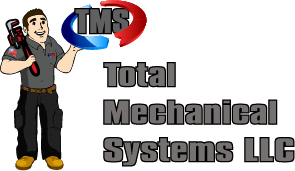An air-source heat pump can provide efficient heating and cooling for your home. When properly installed, an air-source heat pump can deliver one-and-a-half to three times more heat energy to a home than the electrical energy it consumes. This is possible because a heat pump moves heat rather than converting it from a fuel like combustion heating systems do.
Air-source heat pumps have been used for many years in nearly all parts of the United States, but until recently they have not been used in areas that experienced extended periods of subfreezing temperatures. However, in recent years, air-source heat pump technology has advanced so that it now offers a legitimate space heating alternative in area like our here in Connecticut.
For example, when entire units are replaced in the Northeast and Mid-Atlantic regions, the Northeast Energy Efficiency Partnerships found that the annual savings when using an air-source heat pump are around 3,000 kWh (or $459) when compared to electric resistance heaters, and 6,200 kWh (or $948) when compared to oil systems. When displacing oil (i.e., the oil system remains, but operates less frequently), the average annual savings are near 3,000 kWh (or about $300).
Types of Air-Source Heat Pumps
The different types of air source heat pumps are described below.
Ductless vs. Ducted vs. Short-Run Ducted
Ductless applications require minimal construction as only a three-inch hole through the wall is required to connect the outdoor condenser and the indoor heads. Ductless systems are often installed in additions.
Ducted systems simply use ductwork. If your home already has a ventilation system or the home will be a new construction, you might consider this system.
Short-run ducted is traditional large ductwork that only runs through a small section of the house. Short-run ducted is often complemented by other ductless units for the remainder of the house.
Split vs. Packaged
Most heat pumps are split-systems—that is, they have one coil inside and one outside. Supply and return ducts connect to the indoor central fan.
Packaged systems usually have both coils and the fan outdoors. Heated or cooled air is delivered to the interior from ductwork that passes through a wall or roof.
Multi-Zone vs. Single-Zone
Single-zone systems are designed for a single room with one outdoor condenser matched to one indoor head.
Multi-zone installations can have two or more indoor heads connected to one outdoor condenser. Multi-zone indoor heads vary by size and style and each creates its own “zone” of comfort, allowing you to heat or cool individual rooms, hallways, and open spaces. This distinction may also be referred to as “multi-head vs. single-head” and “multi-port vs. single-port.”
How They Work
A heat pump’s refrigeration system consists of a compressor and two coils made of copper tubing (one indoors and one outside), which are surrounded by aluminum fins to aid heat transfer. In heating mode, liquid refrigerant in the outside coils extracts heat from the air and evaporates into a gas. The indoor coils release heat from the refrigerant as it condenses back into a liquid. A reversing valve, near the compressor, can change the direction of the refrigerant flow for cooling as well as for defrosting the outdoor coils in winter.
The efficiency and performance of today’s air-source heat pumps is a result of technical advances such as the following:
- Thermostatic expansion valves for more precise control of the refrigerant flow to the indoor coil
- Variable speed blowers, which are more efficient and can compensate for some of the adverse effects of restricted ducts, dirty filters, and dirty coils
- Improved coil design
- Improved electric motor and two-speed compressor designs
- Copper tubing, grooved inside to increase surface area.
Selecting a Heat Pump
Every residential heat pump sold in this country has an EnergyGuide label, which displays the heat pump’s heating and cooling efficiency performance rating, comparing it to other available makes and models.
Heating efficiency for air-source electric heat pumps is indicated by the heating season performance factor (HSPF), which is the total space heating required during the heating season, expressed in Btu, divided by the total electrical energy consumed by the heat pump system during the same season, expressed in watt-hours.
Cooling efficiency is indicated by the seasonal energy efficiency ratio (SEER), which is the total heat removed from the conditioned space during the annual cooling season, expressed in Btu, divided by the total electrical energy consumed by the heat pump during the same season, expressed in watt-hours.
The HSPF rates both the efficiency of the compressor and the electric-resistance elements.
The SEER rates a heat pump’s cooling efficiency. In general, the higher the SEER, the higher the cost. However, the energy savings can return the higher initial investment several times during the heat pump’s life. A new central heat pump replacing a vintage unit will use much less energy, cutting air-conditioning costs substantially.
To choose an air-source electric heat pump, look for the ENERGY STAR® label. In warmer climates, SEER is more important than HSPF. In colder climates, focus on getting the highest HSPF feasible.
These are some other factors to consider when choosing and installing air-source heat pumps:
- Fans and compressors make noise. Locate the outdoor unit away from windows and adjacent buildings, and select a heat pump with an outdoor sound rating of 7.6 bels or lower. You can also reduce this noise by mounting the unit on a noise-absorbing base.
- The location of the outdoor unit may affect its efficiency. Outdoor units should be protected from high winds, which can cause defrosting problems. You can strategically place a bush or a fence upwind of the coils to block the unit from high winds.






